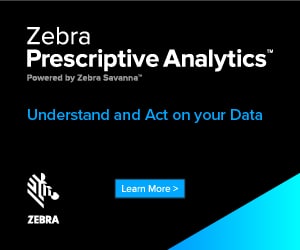A variety of opportunities to commit fraud lie within the supply chain. Crafty retail criminals know that merchandise in transit is highly vulnerable to theft before it reaches the relatively secure store environment and will get very creative in their efforts to seize the goods.
Retailers can stave off supply-chain fraud by leveraging an advanced analytics solution like prescriptive analytics. Prescriptive analytics is a software methodology that analyzes data and tells you:
1. What is happening
2. Why it happened
3. How much it is costing you
4. What to do about it
5. Who should do it
With this analytical powerhouse in their toolbelt, loss prevention professionals can increase visibility to the supply chain and root out fraud before losses mount. Following are a few types of fraud prescriptive analytics can help stamp out.
Warehouse Theft
Within the four walls of every warehouse lies millions of dollars’ worth of valuable merchandise. Even with huge investments in security measures like CCTV, RFID tagging, and more, dishonest employees continue to find ways to slip product out the back door and either keep it for themselves or resell it for cash. Warehouse employees have insider knowledge of their workplaces’ security measures, which helps them avoid detection in their acts of theft. To avoid the triple whammy of cash loss, inventory inaccuracies, and negative impact on the customer experience, retailers need to act now to identify and eliminate warehouse fraud.
There are multiple ways to use a prescriptive analytics solution to identify and root out warehouse theft. One of the most effective involves analyzing claims for missing items, cartons, or totes and correlating them with labor records, shipments, bills of lading, and store claims. The logic is simple – if an employee successfully steals once, they’ll do it again, creating a distinct pattern of missing items during their specific shifts. An alternative approach involves monitoring access to the “cage” (protected storage area for high-risk items). Any employee whose credentials are used to access the cage with unusual frequency or on days they are not working can point you directly to fraudulent activity.
Cargo Heists
Merchandise in transit presents a golden opportunity for thieves to hijack and steal it. Equally concerning is theft by third-party logistics drivers, who may be more likely to steal due to a lack of loyalty toward the retailer receiving the shipment. The total amount of merchandise lost to cargo heists increases every year – and by extension, the theft becomes more difficult to detect.
Prescriptive analytics can leverage a variety of data to identify cargo heists, and one of the most effective is GPS data and delivery route. By analyzing GPS data, prescriptive analytics easily identifies and alerts you when trucks unexpectedly stop or take sudden detours along their routes. This is a strong indicator of some type of fraud (the truck may have been hijacked or the driver may have stopped to transfer goods into a colluder’s vehicle or safehouse) and empowers you with the fastest means of both identifying it and, more importantly, acting on it.
Bribery
Some vendors and suppliers will do just about anything to win your business – including bribing your buyers. Some dishonest buyers and merchandisers will gladly accept cash, merchandise, vacations, and other perks in exchange for a lucrative contract or special favors. It is common practice in retail to forbid buyers from accepting bribes to ensure the contract goes to the best supplier – not just the one with the deepest pockets. But when greed takes over, buyers may be influenced to make a bad decision.
A solution involves configuring prescriptive analytics to monitor your buying policies and vendor agreements and compare them to actual business activities. Any violations or inconsistencies (for instance, a low-selling product that a buyer nonetheless keeps ordering more of) are instantly flagged and sent to the relevant figures of authority.
In one example of this, a fashion retailer’s prescriptive analytics solution notified its asset protection (AP) team to irregular supplier payments issued by a certain buyer. Some vendors were being paid in just 10 days (much too fast, as the retailer requires payment after 30 days to ensure quality), while other, smaller vendors were being paid up to six months late. The solution identified this was inconsistent with the terms set forth in the buyers’ agreements and ordered the AP team to investigate.
The investigation revealed the buyer was prioritizing payments to some vendors in exchange for a variety of perks, including cash, expensive wines, and, in one case, a new car. The buyer also confessed that he was delaying payments to smaller vendors to force them to provide perks as well, which few of them could afford. He was terminated, thus resolving a case worth $3.5 million.
For more information on the use of prescriptive analytics in preventing supply-chain fraud, visit the Zebra website.
About the Author
Scott Pethuyne is a member of the Industry Solutions team at Zebra Analytics. He comes from an accomplished background in asset protection with tenures at Justice, Ascena Retail Group, and Designer Brands (formerly DSW). He uses his intimate knowledge of AP strategies and the Zebra Prescriptive Analytics solution to show retailers how to combat fraud, drive efficiency, and strengthen revenue and margins with Zebra Prescriptive Analytics.
